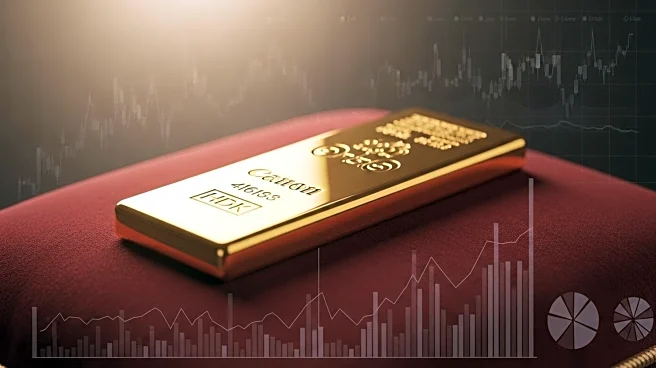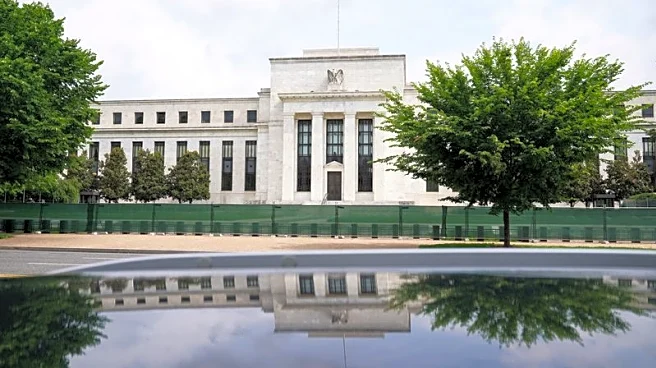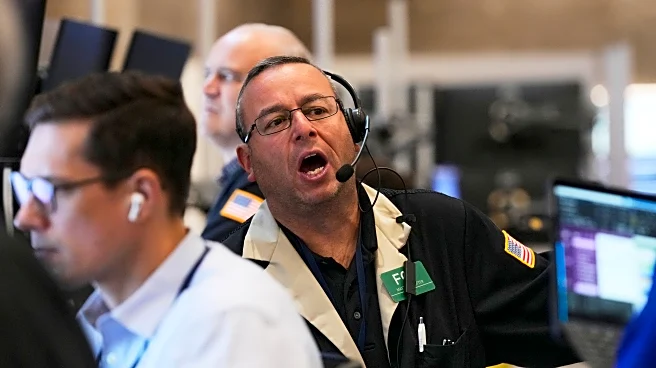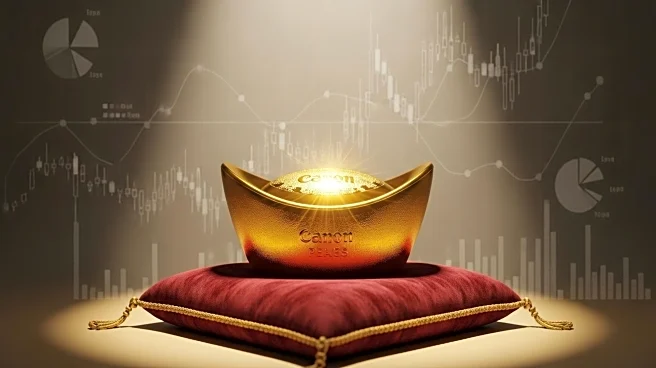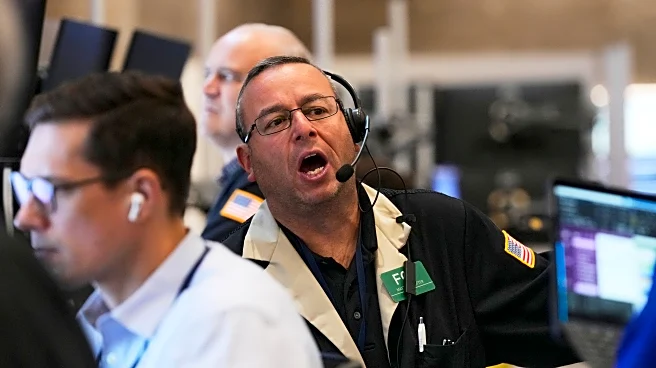What's Happening?
Gold prices have reached a record high of $3,673.95 per ounce, driven by expectations of a U.S. interest rate cut and anticipation of upcoming inflation data. Spot gold increased by 0.8% to $3,655.77 per ounce, while U.S. gold futures for December delivery rose by 0.3% to $3,694.60. The rise in gold prices is supported by signs of cooling in the U.S. labor market, which have weakened the dollar. Recent U.S. nonfarm payroll data indicated weakening labor market conditions, reinforcing the likelihood of a rate cut at the Federal Reserve's policy meeting. The U.S. economy reportedly created 911,000 fewer jobs in the past year than previously estimated, suggesting job growth was stalling before President Trump's tariffs on imports. Market participants are closely watching U.S. producer price inflation data and consumer price inflation readings for further cues on the Federal Reserve's interest rate trajectory.
Why It's Important?
The surge in gold prices highlights the role of gold as a safe-haven asset amid economic uncertainty. A potential interest rate cut by the Federal Reserve could further bolster gold prices, as non-yielding gold typically performs well in low-interest-rate environments. The weakening U.S. labor market and revised job growth figures underscore economic challenges, which may influence monetary policy decisions. The ANZ Group has raised its year-end gold price forecast to $3,800 per ounce, with expectations of prices peaking near $4,000 by next June. This trend could impact investors, central banks, and industries reliant on gold, as they navigate the implications of fluctuating gold prices and economic conditions.
What's Next?
The Federal Reserve's upcoming policy meeting will be crucial in determining the direction of interest rates, with markets pricing in a 92% chance of a 25-basis-point rate cut. The release of U.S. producer price inflation data and consumer price inflation readings will provide further insights into the Fed's monetary policy path. Stakeholders, including investors and policymakers, will be monitoring these developments closely to assess their impact on gold prices and broader economic conditions. The potential rate cut and economic data could influence market sentiment and investment strategies in the coming months.
Beyond the Headlines
The record high in gold prices reflects broader economic uncertainties and shifts in monetary policy. The weakening labor market and revised job growth figures may prompt discussions on the effectiveness of current economic policies and the need for adjustments. The role of gold as a safe-haven asset may gain prominence, influencing investment strategies and central bank reserves. Additionally, the interplay between interest rates, inflation data, and gold prices could have long-term implications for financial markets and economic stability.




